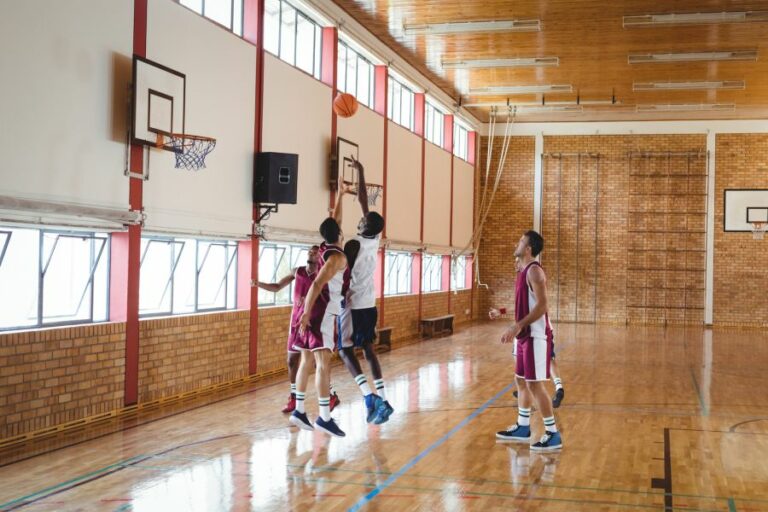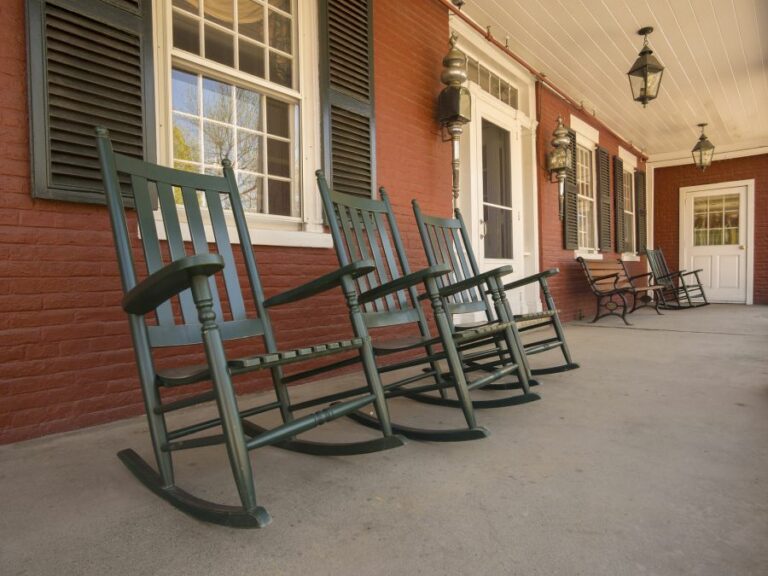Outdoor Rubber Paint, 25 Things You Should Know
Are you looking to give outdoor surfaces a fresh, durable, and weather-resistant coating? Look no further! We’re here to share our expert insights about an incredible solution: outdoor rubber paint. This versatile paint provides the protection and aesthetics your space needs, and we’ll guide you through everything you need to know about it.
Outdoor rubber paint:
Outdoor rubber paint, also known as liquid rubber or elastomeric paint, is a durable, flexible, and weather-resistant coating made from synthetic rubber and resins. It is ideal for various exterior applications like playgrounds, patios, and fences, offering enhanced surface protection, improved safety, non-slip properties, and aesthetic appeal. The paint can be applied with a brush, roller, or sprayer and is recognized as an environmentally friendly alternative to traditional paints.

Discover the durability and versatility of outdoor rubber paint! Ideal for a variety of surfaces, this unique paint offers unmatched protection and style. Read on as we delve into its remarkable features, uses, and tips for a successful application. Don’t miss out on the chance to transform your space!
Contents
- 1 Exterior Rubber Coating Paint
- 2 What is the Most Suitable Paint for Outdoor Rubber Surfaces?
- 3 Does Rubberized Paint Provide Waterproofing Properties?
- 4 What are the applications of rubberized paint?
- 5 Which Type of Paint Exhibits a Rubber-Like Drying Property?
Exterior Rubber Coating Paint
Outdoor rubber paint is a versatile and durable surface treatment option that offers numerous benefits for various applications, from playgrounds to patios.
• Understanding Outdoor Rubber Paint
Outdoor rubber paint, also known as liquid rubber or elastomeric paint, is a thick, flexible coating made from synthetic rubber and resins. It is designed to be applied to a variety of outdoor surfaces to provide an added layer of protection and aesthetic appeal.
The U.S. Environmental Protection Agency (EPA) recognizes rubberized coatings as environmentally friendly and safe alternatives to traditional paints and coatings.
– Key Features
- High elasticity: Rubber paint has a high degree of flexibility, allowing it to expand and contract with the material it’s applied to without cracking or peeling. This is particularly useful for covering surfaces that are prone to movement or expansion, such as wood or concrete.
- Durable and weather-resistant: With its strong adhesive properties, outdoor rubber paint is capable of withstanding harsh environmental conditions, including rain, snow, sunlight, and fluctuations in temperature, making it ideal for long-term protection.
- Slip-resistant: When applied correctly, rubber paint can create a textured, non-slip surface that increases safety in high-traffic areas or locations prone to moisture, such as pool decks, patios, or playgrounds.
- Easy to apply and maintain: Outdoor rubber paint can be applied with a brush, roller, or sprayer, depending on the surface and desired finish. Because it dries quickly and requires minimal upkeep, it is an ideal choice for DIY enthusiasts and seasoned professionals alike.
• Advantages of Using Outdoor Rubber Paint
Outdoor rubber paint offers a wide range of benefits that make it an ideal choice for many exterior applications:
– Enhanced Surface Protection
Outdoor rubber paint forms a tough, water-resistant barrier that can effectively protect surfaces from water infiltration, mold and mildew growth, and general wear and tear. This not only helps extend the lifespan of the surface but also enhances its overall appearance.
– Improved Safety and Accessibility
As mentioned earlier, rubber paint can create a non-slip surface that reduces the risk of accidents in areas that may be exposed to moisture, such as poolsides or playgrounds.
Additionally, its color versatility allows for the creation of high-visibility markings or patterns, further improving safety and accessibility in public spaces.
– Aesthetic Appeal and Versatility
Outdoor rubber paint comes in various colors and finishes, and it can be used to cover a wide range of surfaces, from concrete and asphalt to wood and metal. This enables you to achieve a cohesive look across different materials, ensuring that the final result is both visually appealing and functional.
• Popular Applications of Outdoor Rubber Paint
Outdoor rubber paint is suitable for various applications due to its durability, weather resistance, and versatility. Here are some popular uses:
– Playgrounds and Sports Courts
Playground surfaces require a coating that can withstand heavy foot traffic, impact loads, and exposure to the elements. As a result, rubber paint is a popular choice for play areas and sports facilities, providing a safe, slip-resistant surface that is easy to clean and maintain.
– Patios, Pool Decks, and Walkways
Outdoor rubber paint can be used to create non-slip surfaces in areas that may be prone to water and require added traction. The water-resistant barrier it forms also helps protect these surfaces from damage caused by water infiltration and frequent foot traffic.
– Fences, Outdoor Furniture, and Structures
The high elasticity and weather resistance of outdoor rubber paint make it an excellent choice for exterior wooden structures, such as fences, outdoor furniture, and pergolas. Applying rubber paint to these surfaces can help protect them from weathering, insect damage, and general wear and tear.
• Tips and Recommendations for Applying Outdoor Rubber Paint
To ensure that your outdoor rubber paint project is a success, here are some tips and recommendations:
- Properly clean and prepare the surface: Remove any dirt, debris, or loose materials from the surface, and repair any cracks, holes, or surface imperfections before applying the paint.
- Use a primer when necessary: Priming the surface before applying rubber paint can help enhance adhesion, especially on porous surfaces like concrete or wood.
- Apply multiple, thin layers: This allows the paint to dry evenly and helps prevent pooling or uneven textures. Allow each layer to dry thoroughly before adding the next one.
- Use a compatible topcoat or sealant: Adding a topcoat or sealant can help protect the rubber paint from damage, such as scratches or abrasions, and extend its lifespan.
In conclusion, outdoor rubber paint is a highly versatile and durable coating option that offers numerous benefits for a variety of exterior applications.
By understanding its key features and advantages, as well as the various surfaces it can be used on, you can make an informed decision when selecting the right product for your project.
With proper surface preparation, application, and maintenance, outdoor rubber paint can provide long-lasting protection, enhanced safety, and an attractive finish.
What is the Most Suitable Paint for Outdoor Rubber Surfaces?
As an experienced painter, I am often asked which paint is best for outdoor rubber surfaces. Painting rubber surfaces can be quite challenging, as the material tends to be flexible and may not hold paint, as well as other materials such as wood or metal.
• Acrylic Paint: A Versatile Option
One of the most popular and versatile paints for outdoor rubber surfaces is acrylic paint. The reason for its popularity is simple: acrylic paint adheres well to rubber, and it is also highly resistant to weather-related wear and tear.
This type of paint also dries quickly and is available in a wide variety of colors and finishes, making it an ideal choice for many outdoor projects involving rubber surfaces.
– Choosing the Right Acrylic Paint for Your Project
When choosing acrylic paint for your outdoor rubber project, selecting a high-quality product specifically formulated to work well on rubber surfaces is essential. Lower-quality paints may not adhere well and could crack or peel off over time.
One brand I recommend for outdoor rubber projects is Krylon Fusion, specifically designed for use on plastic and rubber surfaces.
– Preparing the Rubber Surface for Painting
Before starting to paint the rubber surface, it’s crucial to prepare it properly. First, clean the rubber thoroughly to remove any dirt or debris that could interfere with paint adhesion.
If the rubber surface is particularly dirty, a mild detergent mixed with water can be used to clean it. Afterward, rinse the surface well and allow it to dry completely.
Next, lightly sand the rubber surface to help the paint adhere better. Use fine-grit sandpaper (such as 220-grit) and sand the surface evenly. Once done, remove any sanding dust using a tack cloth or damp rag.
• Using A Primer: An Important Step
Applying a primer before painting the rubber surface is an important step that should not be skipped. Primer helps to create a smooth, even surface for the paint to adhere to and can significantly improve the durability of the paint job.
It is recommended to use a primer specifically designed for rubber surfaces to ensure optimal adhesion of the paint.
One primer I recommend is Rust-Oleum Specialty Plastic Primer, which is ideal for use on rubber and plastic surfaces. Apply the primer according to the manufacturer’s instructions, typically applying one or two thin, even coats, allowing for drying time between layers.
• Applying the Acrylic Paint
Once the primer is thoroughly dry, it’s time to apply the acrylic paint. Use a high-quality paintbrush or paint sprayer to apply thin, even coats of paint to the rubber surface.
It is generally better to apply multiple thin layers of paint rather than one thick coat, as this will help prevent issues such as cracking and peeling.
Allow each layer of paint to dry according to the manufacturer’s instructions before applying the next coat. Typically, two to three coats of paint are sufficient for most projects, but additional coats may be necessary for adequate coverage, especially if using lighter-colored paint.
• Adding a Clear Sealer for Additional Protection
Finally, after the paint has dried, it’s a good idea to add a clear sealer to protect the paint’s job and enhance its durability.
A clear acrylic sealer, such as Krylon Crystal Clear Acrylic Coating, can provide additional protection against the elements, helping to ensure that your outdoor rubber project stays looking great for years to come.
Apply the sealer according to the manufacturer’s instructions, usually applying one or two thin, even coats.
• In Conclusion
When it comes to choosing the best paint for outdoor rubber surfaces, acrylic paint is a top choice due to its excellent adhesion and weather resistance.
By properly preparing the rubber surface, using a high-quality primer and acrylic paint, and sealing the paint job with a clear sealer, you can achieve a long-lasting, professional-looking finish on your outdoor rubber project.
Paint Brand | Type | Durability | Application |
|---|---|---|---|
Flex Seal Liquid Rubber | Liquid Rubber | High | Brush, roll, or dip |
Rust-Oleum Painter’s Touch | Spray Paint | High | Spray |
Krylon Fusion | Spray Paint | Medium | Spray |
Performix Plasti Dip | Rubber Coating | High | Brush or spray |
Liquitex Professional Spray Paint | Acrylic Spray Paint | Medium | Spray |
Does Rubberized Paint Provide Waterproofing Properties?
Rubberized paint is an innovative and versatile product that has taken the painting industry by storm. While it has many unique properties, one of the most valuable is its inherent ability to repel water.
This article will delve into the science and performance of waterproof rubberized paint and address the question: is rubberized paint truly waterproof?
• The Science Behind Rubberized Paint
Rubberized paint is made by combining two main ingredients: (1) a strong adhesive polymer and (2) a flexible rubber compound.
The adhesive polymer serves as a binding agent, enabling the paint to stick to a wide range of surfaces, while the rubber compound provides flexibility, allowing the paint to expand and contract as the surface does. These properties lend to rubberized paint’s superior waterproofing capabilities.
As rubberized paint dries, it solidifies into a seamless, rubber-like surface covering the entire application area. This surface forms a barrier not only against water but also against other external factors such as UV rays and dirt.
Furthermore, due to its flexibility, rubberized paint can withstand temperature changes and structural movement without cracking, further enhancing its waterproofing capabilities.
The United States Environmental Protection Agency (USEPA), a reliable information source, details the various properties of rubberized paint materials in multiple publications, showcasing the science behind this unique paint product.
• Performance in Various Applications
One of the reasons rubberized paint has become increasingly popular is its versatility in a range of applications, including both residential and commercial settings. Let’s take a closer look at some examples of the waterproofing capabilities of rubberized paint in different contexts.
– Roofing
Rubberized paint is often utilized in roofing applications, especially on flat or low-slope roofs. Its seamless rubber-like finish provides excellent waterproofing capabilities, protecting the structure from leaks and water damage.
Moreover, many experts recommend rubberized paint for roofing purposes due to its durability and ability to reflect heat, thereby reducing energy costs within the building.
– Pools and Ponds
When used on pools or ponds, rubberized paint performs exceptionally well in sealing and waterproofing these water features. The flexible nature of rubberized paint allows it to adhere to various surfaces, including concrete, fiberglass, and plaster, without peeling or cracking.
Additionally, rubberized paint is resistant to the chemicals commonly found in pools and ponds, such as chlorine, further demonstrating its waterproofing abilities.
– Basements and Foundations
Another common application for rubberized paint is in basements and on foundations of structures. Moisture infiltration can be a significant issue for below-grade structures, and rubberized paint can be an effective moisture barrier.
Some homeowners have reported noticeable improvements in damp and musty basements after applying rubberized paint to either the interior or exterior walls.
– Marine Applications
Due to its waterproofing capabilities, rubberized paint is also an excellent choice for marine applications. It can be used on boats and ships, providing a protective barrier against the harsh marine environment.
Moreover, rubberized paint helps prevent the growth of marine organisms, such as algae and barnacles, on the hull, which can improve a vessel’s speed and efficiency.
• Proper Application for Optimal Performance
While it’s clear that rubberized paint boasts excellent waterproofing abilities, it is imperative to ensure that it is applied correctly to achieve its full potential.
– Surface Preparation
Before applying rubberized paint, it is essential to properly prepare the surface. The surface should be thoroughly cleaned of dirt, dust, and debris. Any existing paint or coating should be removed, and any cracks or holes should be repaired to ensure a successful application.
– Primer and Undercoat
For the best results, it is recommended to use a primer specifically designed for rubberized paint. This ensures that the paint will adhere properly to the surface, increasing its longevity and waterproofing capabilities.
– Application and Drying Time
Following the application guidelines and drying time found on the rubberized paint product label is crucial. This ensures that the paint thoroughly dries and cures, preventing any issues with adhesion or waterproofing.
In conclusion, rubberized paint is undeniably an effective waterproofing solution for various applications, thanks to its unique composition, flexibility, and adherence capabilities.
By carefully following application guidelines and preparing surfaces appropriately, rubberized paint can provide long-lasting, water-resistant protection across diverse contexts.
What are the applications of rubberized paint?
• Introduction to Rubberized Paint
Rubberized paint is a type of coating that contains a blend of rubber particles mixed with various resins, pigments, and solvents. This unique composition provides numerous benefits over traditional paints, as it is specifically designed to be more durable, flexible, and waterproof.
The versatility and ease of application of rubberized paint have made it a popular choice for several industries and applications, ranging from automotive and marine to residential and industrial uses.
• Automotive and Marine Applications
– Vehicle Protection and Restoration
Rubberized paint is ideal for protecting automotive surfaces from the elements, as well as restoring an old or damaged surface to a like-new condition.
The paint’s elastic nature allows it to expand and contract with the car’s body during temperature fluctuations, which prevents the paint from cracking, peeling, or flaking.
Moreover, the waterproof qualities of rubberized paint make it an excellent barrier against rust and corrosion. Applying a rubberized coating to the vehicle’s undercarriage ensures protection from road salt, moisture, and debris, significantly extending the life of the car’s frame and suspension components.
Based on years of experience working with automobiles, it is recommended to apply at least two coats of rubberized paint on the vehicle’s surface to ensure optimal protection and coverage.
– Marine Vessels and Equipment
Rubberized paint is especially fitting for marine applications due to its heightened resistance against water, UV rays, and salt. The paint’s inherent flexibility makes it perfect for boat hulls, decks, and outdoor marine equipment that require a durable finish able to withstand constant exposure to harsh elements.
Additionally, rubberized paint provides excellent traction for non-slip surfaces on boat decks and docks, as well as adding an extra layer of protection against punctures and abrasions.
Experts agree that selecting a high-quality rubberized paint specifically formulated for marine applications is crucial for achieving the desired longevity and protection. The Interlux brand, for instance, offers an extensive range of specialized marine paints known for their outstanding performance.
• Residential and Industrial Uses
– Waterproofing and Weatherproofing
Rubberized paint is a popular choice for homeowners and property managers seeking an effective solution for waterproofing and weatherproofing exterior surfaces. The paint’s water-resistant properties make it an excellent barrier against moisture penetration for concrete, brick, and stucco surfaces.
Moreover, rubberized paint can be conveniently applied to roofs (both flat and pitched) to seal and protect them from water damage, consequently lengthening the roof’s lifecycle and preventing costly repairs.
For assured results, it is advisable to clean and prime the surfaces properly before applying at least two coats of rubberized paint, ensuring full coverage and optimal protection.
– Industrial Flooring
In industrial settings, such as warehouses and factories, rubberized paint is frequently utilized to provide a durable, low-maintenance, and slip-resistant surface for flooring. Its outstanding resilience and tolerance to heavy traffic and abrasions make it the perfect choice for such demanding environments.
Given the safety concerns in these settings, experts recommend opting for rubberized paint with an anti-slip or textured finish to reduce the risk of accidents caused by slippery surfaces. Furthermore, selecting a paint that is resistant to chemicals and oils is crucial for maintaining a clean and functional workspace.
– Soundproofing and Vibration Damping
The unique composition of rubberized paint also lends itself to effective soundproofing and vibration-damping applications.
When applied to walls, ceilings, or floors, the rubberized coating significantly reduces noise transmission and vibrations, making it an ideal solution for residential, commercial, and industrial settings.
In particular, the Massachusetts Institute of Technology (MIT) has conducted extensive research on the soundproofing benefits of rubber-based coatings and offers valuable resources on the topic.
• Conclusion
Rubberized paint’s highly versatile nature and remarkable advantages make it an ideal solution for a wide range of applications.
Whether it’s automotive and marine surface protection, residential weatherproofing, or commercial soundproofing, rubberized paint’s durability, elasticity, water resistance, and ease of application make it a popular choice among professionals and amateurs alike.
As with any product, it is important to choose a high-quality rubberized paint that best fits the application’s requirements and to follow the instructions thoroughly to ensure optimal performance and longevity.
Which Type of Paint Exhibits a Rubber-Like Drying Property?
Rubber-like paints are widely used for various purposes due to their unique properties. These versatile paints are known to be durable, flexible, and water-resistant, making them ideal choices for both interior and exterior applications.
• Properties of Rubber-like Paints
Rubber-like paints owe their unique characteristics to the ingredients used in their formulation. Generally, they consist of a liquid binder that holds the pigment together, along with various additives that give the paint its rubber-like properties. Some of the key properties of rubber-like paints include:
- Flexibility: The paint’s ability to stretch without cracking or peeling makes it well-suited for covering surfaces that are subject to frequent movement or changes in temperature.
- Durability: Rubber-like paints are known for their long-lasting nature and ability to withstand harsh conditions, such as exposure to UV rays and chemicals.
- Water and stain resistance: These paints can effectively repel moisture, protecting surfaces from water damage and making them easier to clean.
- Adhesion: Rubber-like paints adhere well to various surfaces, including wood, metal, concrete, and more.
- Ease of application: These paints can be easily applied using a brush, roller, or sprayer, depending on the desired finish.
• Types of Rubber-like Paints
There are several different types of paints that exhibit rubber-like properties, including:
– Latex Paint
Latex paint, also known as water-based paint, is a popular choice for both interior and exterior applications. It dries to form a flexible, rubber-like coating that resists chipping and peeling. Latex paint is easily cleaned with water and soap, making it a convenient option for home improvement projects.
– Acrylic Paint
Similar to latex paint, acrylic paint is water-based and dries to form a flexible, durable coating. It has excellent adhesion properties, making it suitable for a variety of surfaces. Acrylic paint is also resistant to moisture and UV rays, which contributes to its long-lasting performance.
– Liquid Rubber Paint
As its name suggests, liquid rubber paint contains rubber particles suspended in a liquid binder. When applied to a surface, it dries to form a thick, rubber-like coating that is waterproof and flexible.
Liquid rubber paint is commonly used for sealing and protecting surfaces from water damage, such as in roofing and basement applications.
– Plasti Dip
Plasti Dip is a unique, rubber-based coating that can be applied to various surfaces, including metal, wood, and plastic. The dried coating is extremely flexible, durable, and removable, making it ideal for temporary projects or protecting surfaces from scratches and dents.
• Applications of Rubber-like Paints
Due to their versatile properties, rubber-like paints can be used for various applications, such as:
- Interior walls and ceilings: Latex and acrylic paints are commonly used for interior painting projects, providing a durable and washable surface.
- Exterior surfaces: These paints can be used to coat exterior surfaces, offering protection from weather, UV rays, and water damage.
- Roofing and waterproofing: Liquid rubber paint is an effective solution for sealing roofs, gutters, and basements against water damage.
- Automotive: Plasti Dip can be used to temporarily change the color of a vehicle or protect its exterior from scratches and dents.
- Crafts and DIY projects: Rubber-like paints are suitable for a range of DIY projects, from furniture refinishing to art projects.
• Benefits of Using Rubber-like Paints
Some of the notable benefits of using rubber-like paints include:
- Flexibility: These paints can stretch and contract with the surface they are applied to, reducing the risk of cracking and peeling.
- Durability: Rubber-like paints provide a long-lasting finish, allowing surfaces to withstand harsh conditions and maintain their appearance over time.
- Water resistance: Moisture protection helps to prevent water damage and mold growth on surfaces.
- Ease of application and cleanup: Many rubber-like paints can be easily applied and cleaned up with water, making them convenient to work with.
- Wide range of applications: Their versatile properties make these paints suitable for use on various surfaces and in different situations.
• Personal Recommendations
Based on personal experience, I recommend using latex or acrylic paint for most interior and exterior projects, as they offer a balance of durability, flexibility, and ease of application.
For waterproofing projects or surfaces that require exceptional protection from water damage, liquid rubber paint is an excellent choice. Finally, Plasti Dip can be a fun and effective option for temporary projects or to ensure the protection of vulnerable surfaces.
In conclusion, rubber-like paints are versatile and practical options for a range of applications, offering unique properties such as flexibility, durability, and water resistance. By understanding the types and uses of these paints, you can make an informed decision about the best paint for your specific needs.







